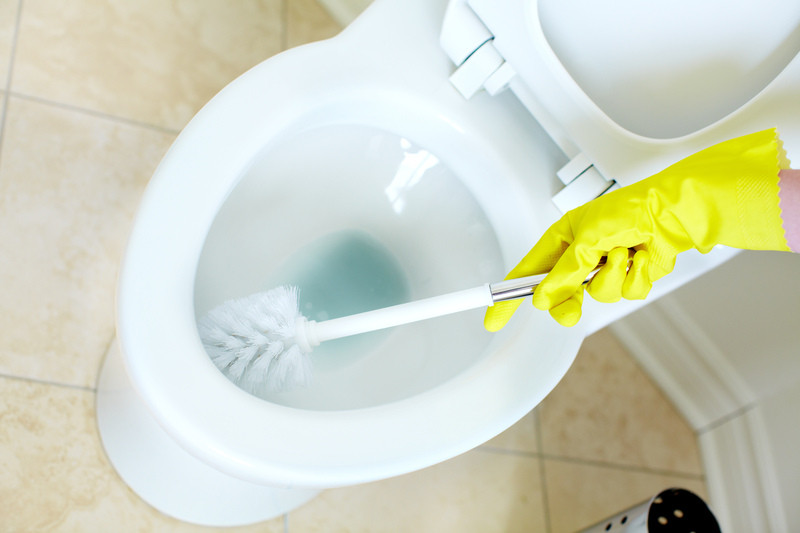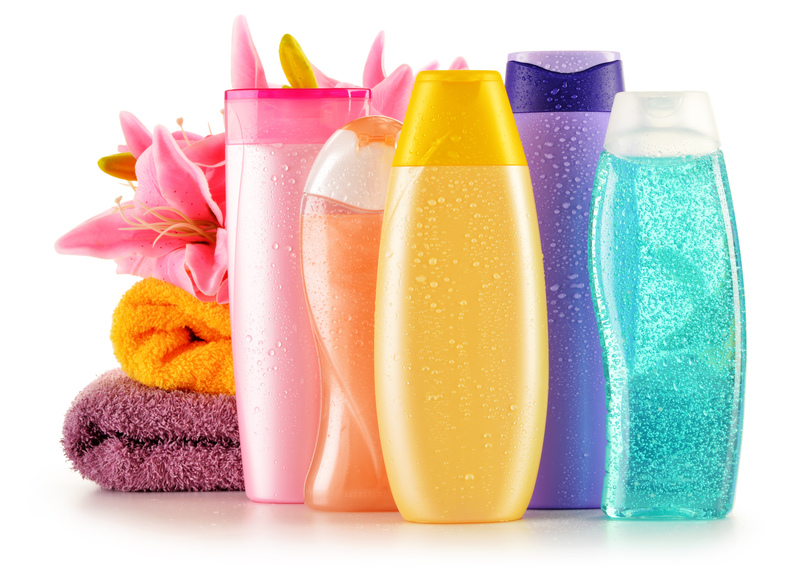Cleaning Mould from Window Sills: What You Need to Know
Posted on 08/10/2025
Mould is a persistent problem in many homes, especially around window sills where moisture tends to accumulate. Left unchecked, it can damage surfaces, cause unsightly stains, and even pose health risks. In this comprehensive guide, we discuss everything you need to know about cleaning mould from window sills, from identification to effective removal methods and prevention tips.

Table of Contents
- Why Mould Grows on Window Sills
- Dangers of Mould on Window Sills
- How to Spot Mould on Window Sills
- Preparation Before Cleaning Mould from Window Sills
- Best Practices for Cleaning Mold Off Window Sills
- Natural Solutions for Removing Mould from Window Sills
- Using Commercial Cleaners to Clean Window Mould
- Tips for Preventing Mould Regrowth on Window Sills
- When to Seek Professional Help
- Frequently Asked Questions about Mould on Window Sills
Why Mould Grows on Window Sills
Mould thrives in damp, dark environments with limited ventilation. Window sills, particularly in older homes or those with inadequate insulation, are prime targets for mould growth due to condensation. When warm indoor air meets cold glass, water droplets form and accumulate on the sill, creating the perfect breeding ground for nuisance mould spores.
- Condensation: Humid air condenses on cooler window surfaces, giving mould the moisture it needs.
- Poor Ventilation: Lack of airflow allows dampness to linger, encouraging mould spores to settle and grow.
- Organic Material: Dust, dirt, or wooden window frames provide nutrients for mould colonies.
Common Types of Mould Found on Window Sills
- Aspergillus - Often appears as black or green spots. Can cause allergy symptoms.
- Cladosporium - Typically olive-green or brown in colour. Grows on wood and fabrics.
- Penicillium - Blue-green in shade, known for its fuzzy texture.
Dangers of Mould on Window Sills
Ignoring mould on window sills can have several consequences. Besides the obvious cosmetic issues, it poses health risks, especially for those with allergies, asthma, or compromised immune systems. Exposure to mould spores can lead to symptoms like sneezing, coughing, skin rashes, and even respiratory infections.
- Allergic reactions - Runny nose, watery eyes, and sinus congestion.
- Respiratory issues - Wheezing, coughing, and throat irritation.
- Structural damage - Prolonged exposure can weaken wood and paint, leading to costly repairs.
In short, cleaning mould from window sills is not only about home hygiene but also about safeguarding your family's health.
How to Spot Mould on Window Sills
Mould comes in various colours and appearances, so it's important to know what to look for. Early detection makes the removal process more effective and prevents widespread infestation.
- Visual cues: Dark spots, fuzzy patches in black, green, brown, or even white.
- Musty odour: An unpleasant, earthy smell is a tell-tale sign.
- Dampness: Persistently wet or damp window sills harbour hidden mould even if you can't see it yet.
Tip: Use a flashlight for thorough inspection, especially in corners and crevices of the window frame.
Preparation Before Cleaning Mould from Window Sills
Before you start removing mould from window sills, it's essential to prepare the area and yourself to minimize health risks and the chance of spreading spores.
Safety Equipment Checklist
- Gloves: Protect your skin from mould and cleaning chemicals.
- Face mask: Prevents inhalation of mould spores.
- Protective goggles: Shields eyes from splashes and particles.
- Old clothes: Mould can permanently stain fabrics.
Ventilation and Area Prep
- Open windows: Allows fresh air circulation and helps dry out the area.
- Remove curtains & blinds: Wash them separately if affected.
- Lay down newspaper or plastic sheeting: Catches debris and cleaning runoff.
Best Practices for Cleaning Mold Off Window Sills
Cleaning mould from window sills can be easy or challenging depending on the severity of the infestation. Here's a step-by-step approach to ensure effective results:
- Dry the Area:
- Wipe away any visible condensation with a dry cloth to limit the spread of spores.
- Vacuum (with HEPA filter):
- Vacuum loose debris, dust and visible mould fragments gently. Dispose of the vacuum bag immediately outdoors.
- Apply Cleaning Solution:
- Use your chosen cleaning agent (see next sections for homemade vs. commercial options).
- Spray or apply with a sponge, ensuring thorough coverage of all affected areas.
- Scrub:
- With a soft-bristled brush or old toothbrush, scrub the mouldy surface gently but firmly.
- Rinse:
- Use clean water and a fresh cloth to wipe down the sill and remove residue.
- Dry Thoroughly:
- Dry the area meticulously using a microfibre towel. You can also use a fan or hairdryer on a low setting.
Note: Always discard sponges, cloths, and brushes used for cleaning mould, or wash them in hot, soapy water if reusable.
Natural Solutions for Removing Mould from Window Sills
Many homeowners prefer eco-friendly and chemical-free methods for cleaning window sill mould. Here are the most effective natural solutions:
1. **White Vinegar**
- Pure white vinegar is mildly acidic and kills around 80% of mould species.
- Pour undiluted vinegar into a spray bottle and saturate the mouldy area. Leave for at least an hour before scrubbing and rinsing.
2. Baking Soda
- Baking soda is a safe, gentle abrasive and mould inhibitor.
- Mix one teaspoon of baking soda in a spray bottle of water, shake well, and spray onto the affected surface.
- Scrub, rinse, and repeat if necessary.
3. Lemon Juice
- Natural citric acid helps break down mould and leaves a pleasant scent.
- Use fresh lemon juice on a cloth or sponge to scrub affected areas, allowing it to sit for several minutes before rinsing.
4. Hydrogen Peroxide (3%)
- This is a natural disinfectant effective against most mould types.
- Spray on, let stand for 10-15 minutes, scrub, then rinse with clean water.
Tip: Test any solution on a small, hidden section of the window sill before full application, as natural acids may affect finishes.
Using Commercial Cleaners to Clean Window Mould
Store-bought mould removers can be highly effective, especially for severe infestations or when quick results are needed. The most common options for cleaning mould off window sills include:
- Bleach-Based Cleaners:
- Bleach kills most surface moulds instantly and removes stains. Mix 1 part bleach to 10 parts water, apply to the area, let it sit for 10-15 minutes, then scrub and rinse thoroughly.
- Note: Bleach may not penetrate porous surfaces and can produce strong fumes, so use only in well-ventilated areas.
- Dedicated Mould Sprays:
- Available at supermarkets and hardware stores; often contain antimicrobial agents that inhibit regrowth.
- Oxygen-Based Cleaners:
- Products containing activated oxygen are effective and less harsh than bleach.
Always follow manufacturer instructions and wear protective gear when handling chemicals.
Tips for Preventing Mould Regrowth on Window Sills
After thoroughly removing mould from your window sills, focus on preventing it from returning. Here's how:
- Increase Ventilation: Open windows regularly, use extractor fans in kitchens and bathrooms, and consider a dehumidifier if your home is particularly damp.
- Control Humidity: Keep indoor humidity below 60% using a hygrometer for best results.
- Insulate Windows: Upgrade to double glazing or use window insulation kits to reduce condensation.
- Clean Regularly: Wipe down window sills periodically with either vinegar solution or a mild detergent.
- Fix Leaks Promptly: Address any leaks or structural problems that let water seep in around windows.
- Use Mould-Resistant Paint: A speciality paint can provide a protective barrier against dampness and spore settlement.
Consistent maintenance is key to keeping your window sills mould-free year-round.
When to Seek Professional Help
While cleaning mould from window sills is manageable for most homeowners, there are situations when expert assistance is necessary:
- Extensive Infestation: If the mould covers a large area (greater than 1 square metre) or keeps returning.
- Hidden Damage: Signs of mould inside walls, serious wood rotting, or significant structural impairment.
- Health Symptoms: If household members suffer from severe allergic reactions or asthma attacks linked to mould exposure.
A professional mould remediation specialist can thoroughly inspect, remove all traces, and provide advice specific to your property. They also have industrial-grade equipment for serious cases.
Frequently Asked Questions about Mould on Window Sills
How often should I clean window sills to prevent mould?
To prevent mould, clean your window sills every 1-2 weeks, especially during wetter months or if your area is prone to condensation.
Will painting over mould kill it?
No. Painting over mould only covers the problem and can make it worse. Always clean and disinfect mouldy surfaces before painting.
Can I use essential oils to remove mould?
Some oils, like tea tree oil, have antifungal properties, but they should be used as a supplementary step, not a standalone solution for severe infestations.
Is mould on window sills dangerous for pets?
Yes. Pets can have allergic reactions to mould spores similar to humans. Keep areas cleaned and ensure pets do not ingest or come into contact with mouldy surfaces.
Can I use bleach on wooden window sills?
Bleach can damage and discolour wood. Use milder solutions like vinegar or commercial wood-safe mould cleaners for timber sills.

Conclusion: A Fresh, Healthy Home Starts with Clean Window Sills
Cleaning mould from window sills is essential for home hygiene, structural integrity, and health. With the right knowledge and methods, you can tackle mould effectively and prevent it from coming back. Regular maintenance, prompt cleaning, and moisture control are the best defences against future outbreaks. Remember, if the job feels overwhelming or your health is at risk, don't hesitate to consult a professional mould remediation expert.
Discover more cleaning tips and solutions for a safer, healthier home in our related guides.


